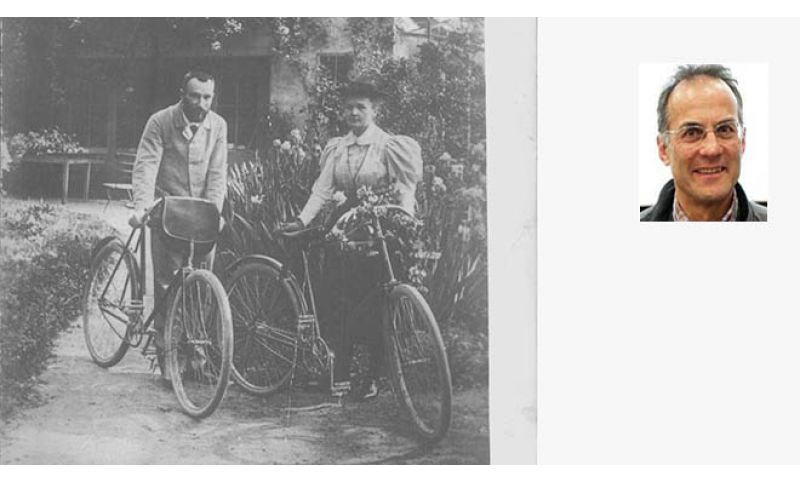

The wedding. It was July 26, 1895. Then the honeymoon, by bicycle, on the roads of Ile de France. Pierre Curie, French, and Maria Sklodowska, Polish, future Nobel Prize winners in Physics (she also in Chemistry), had two identical bicycles, both men's models, Pierre's handlebar had a travel bag, Marie's a flower garland. Pierre wore a sports jacket and pants, Marie a straw hat, a puffed-shoulder jacket and knee-length culottes.
"In the straps of their luggage racks - wrote daughter Eve Curie in the biography "Life of Madame Curie" (an Oscar Mondadori from 1966, but the work dates back to 1938 and miraculously resurfaced in a book crossing) - they tied a few garments and two long rubber raincoats, which the rainy summer had made necessary to purchase. They have breakfast on the grass of clearings, with some bread and cheese, a few peaches, a handful of cherries. Every evening, they stop randomly at an unknown hotel. They find a thick and warm soup, a room with walls covered in faded wallpaper on which the candle makes shadows dance. They remain alone in the false silence of the countryside night, pierced by distant howls, bird chirping, the heartbreaking meow of cats, and the dramatic creaking of floors". Not just bikes: "When they want to explore coppices, rocks, they interrupt the journey with a walk on foot".
Pierre was restless: "He cannot remain still in a garden. He doesn't know how to 'rest'. Nor does he love classic excursions with predetermined routes. He has no notion of time: why march during the day rather than at night, why should meal times be immutably fixed? Since childhood, he is used to leaving suddenly, now at dawn, now at dusk, without knowing if he will return in three days or in an hour". The bicycle trip of summer 1895 - Eve Curie calls them "wedding wanderings" - are even more beautiful: "Love embellishes and exalts them. At the cost of a few francs, which serves to pay for rooms in villages, and some thousands of pedal strokes, the newlyweds offer themselves, during enchanted nights and days, the luxury of solitude for two".
Cycle tourism became the summer vacation of the Curie couple: in Auvergne, Brittany, Normandy. Also day trips: "Sometimes - Maria wrote to her brother Jozef - we go to Sceaux to visit my husband's parents". From Paris to Sceaux it's about fifteen kilometers. "When the weather is nice, we go to Sceaux by bicycle; we only take the train when it's pouring rain". The bike as a reward: "In the secondary teaching competition, Marie Curie ranks first. Without a word, Pierre threw a protective and proud arm around the Polish woman's neck. Embracing, they returned home to Glacière Street... and immediately inflated bicycle tires, filled bags... On the road to Auvergne: an exploration trip..." The bike as joy: "A radiant memory - Maria would later write - remained with us of a sunny day when, after a long and arduous climb, we crossed the green and fresh prairie of Aubrac, in the pure air of the highlands". The bike as adventure: "Another vivid memory is of an evening when, lingering at twilight in the Truyère gorge, we were particularly captivated by a folk tune dying in the distance, coming from a boat descending with the current. Having miscalculated our stages, we could not reach our accommodation before dawn". The bike as surprise: "The encounter with a cart whose horses were frightened by our bicycles forced us to cut across plowed fields".

Se sei giá nostro utente esegui il login altrimenti registrati.